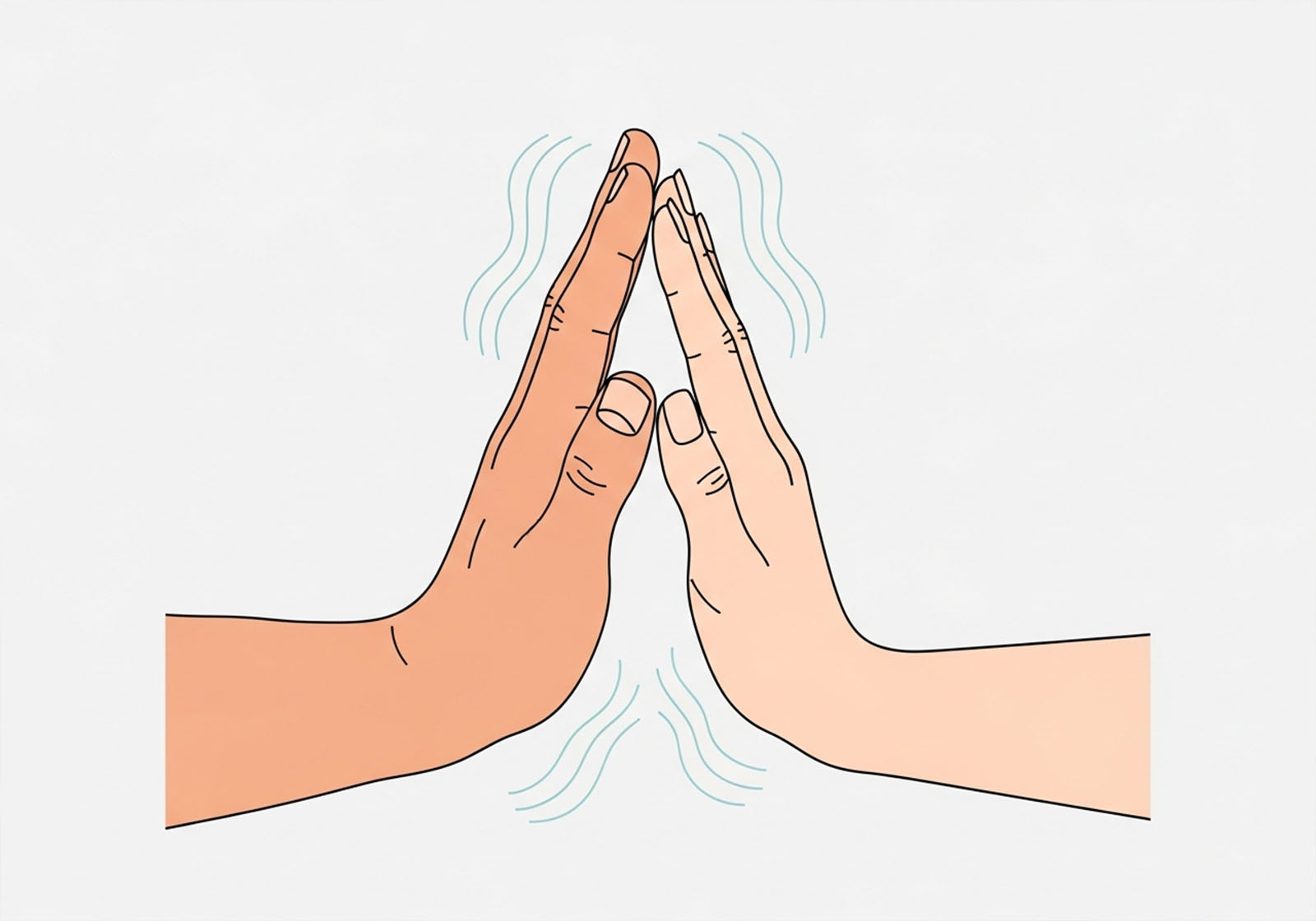Finding Your Voice: How to Communicate Needs and Boundaries for a Stronger Relationship

The Quiet Power of Clarity
We all want a deep, lasting connection, the kind where you feel truly seen and understood by your partner. But let's be honest: even in the best relationships, communicating what you need—and where your lines are drawn—can feel like walking a tightrope. It’s a delicate balance.
Many women worry that asking for too much will make them seem high-maintenance, or that setting a firm boundary will push their partner away. So, they stay quiet, letting small resentments build until they become a chasm.
This isn’t just about getting your way; it’s about relationship integrity. Think of your relationship as a beautiful home. Needs are the essentials—the foundation, the plumbing, the electricity—that keep it running smoothly and comfortably. Boundaries are the doors, windows, and fences that define your personal space and keep the house safe. A house with a crumbling foundation and no secure doors isn't a place anyone wants to stay for long. A relationship without clear needs and boundaries is unstable, draining, and ultimately, unsustainable.
If you’re ready to move past the guesswork and silent suffering, it’s time to learn the art of clear, compassionate communication. It’s a skill that pays dividends, leading to less conflict, more intimacy, and a partnership where both men and women feel truly respected.
Understanding Your Relationship Blueprint
Needs vs. Boundaries: A Quick Guide
| Needs | Boundaries |
|---|---|
| What you **require** to feel loved, safe, and secure *within* the relationship (e.g., affection, time, recognition). | The **limits** you set on acceptable behavior *from* your partner (e.g., no yelling, no checking private messages). |
| Communicated as a **request** for action. | Communicated as a **non-negotiable statement** with a consequence. |
Before you can communicate your needs, you must first know them. This step often gets overlooked. We assume we know what we want, but often, we’re reacting to a lack rather than articulating a desire.
Grab a coffee and sit down with yourself for a moment of honest self-reflection. Ask yourself:
-
What makes me feel truly loved and secure? Is it quality time, words of affirmation, physical affection, or something else entirely?
-
What habits or behaviors drain my energy or cause me anxiety? Maybe it’s last-minute changes to plans, constant phone use during dinner, or a lack of help with household tasks.
-
What do I consistently complain about to my friends? That recurring complaint is almost always a buried need.
Needs aren't just big things like fidelity; they’re the everyday stuff, too. A woman might need "predictability" (a text if you’ll be home late) or "acknowledgment" (hearing "thank you" for a task). A man might need "space to decompress" (30 minutes alone after work) or "physical spontaneity." Identifying these specifics is the key to moving from vague frustration ("You never help!") to concrete request ("I need you to take the trash out on Tuesdays").
The Art of the 'I Feel, I Need' Statement
💡 Did You Know? The "I Feel, I Need" method is rooted in **Nonviolent Communication (NVC)**. Studies show that focusing on your own feelings first significantly reduces defensiveness in a listener, making them more open to your request.
The biggest mistake people make when communicating is starting with an accusation. When a woman says, "You always ignore me when you play that video game," the man hears "You are a bad partner" and instantly gets defensive. Communication shuts down.
The solution is to pivot to an "I Feel, I Need" formula. This technique is non-confrontational and focuses on your internal experience, which your partner cannot argue with.
-
Start with your feeling: "I feel unimportant..."
-
State the specific behavior (without judgment): "...when you are on your phone constantly during our dinner together."
-
State your need/request clearly and positively: "I need us to put our phones away from 7:00 PM to 8:00 PM so we can focus on connecting."
Notice the difference? This approach makes the issue about the action and the impact on you, not a flaw in your partner's character. It shifts the conversation from a fight to a problem-solving session.
Boundaries: Your Invisible Shield of Self-Respect

If needs are about what you want in the relationship, boundaries are about what you will and won't accept from it. They are critical to maintaining your individual well-being while in a partnership. A healthy boundary isn't a punishment or a wall; it's a statement of your personal limits, and it’s the ultimate act of self-respect.
Boundaries can be:
-
Physical: "I need to have my own time in the morning before we interact."
-
Emotional: "I am not willing to listen to you criticize my mother."
-
Time/Energy: "I cannot be responsible for making every single plan for the weekend; I need you to own that task sometimes."
-
Financial: "I will not let you look at my personal bank account statements."
How to Set and Hold a Boundary
Setting a boundary requires courage and commitment. It’s not a request; it’s a non-negotiable line.
1. Be Direct and Calm: Avoid being overly apologetic or defensive. State the boundary clearly, using simple language.
Example: "I’m letting you know that when you yell during an argument, I will stop the conversation and walk away. We can resume when we can both speak calmly."
2. State the Consequence (The "If-Then"): Your partner needs to know what happens if the boundary is crossed. This is not a threat; it's the natural result of disrespecting your limit.
Example: "If you call me names again during a disagreement, I will need to take a break from this conversation for the rest of the night. I value you, but I will not be spoken to that way."
3. Follow Through: This is the most crucial step. A boundary without a follow-through is just a suggestion. If your partner crosses the line, you must, calmly but firmly, enact the consequence. If you said you'd leave the room if they yelled, you must leave the room. Every time you hold your line, you teach your partner and yourself that your boundaries are real and meaningful.
"A boundary without a follow-through is just a **suggestion**."
When to Use a Time-Out
Sometimes, communication breaks down into emotional chaos, and that's when a "Time-Out" boundary is essential. A time-out is a predetermined agreement that either partner can invoke when an argument becomes too heated or unproductive.
It should always be set up beforehand, when you are both calm. Discuss the following:
-
The Signal: What word or phrase signals the time-out (e.g., "Time-out," "Pause," or even "Red Light").
-
The Duration: How long will the break last (e.g., 30 minutes, 1 hour, or "until morning")?
-
The Agreement: You both agree to physically separate, calm down, and avoid stewing or planning your next defensive argument. You simply need to regulate your emotions.
-
The Re-Entry: You both commit to coming back together at the agreed-upon time to resolve the issue with fresh, clearer minds.
This boundary isn't about avoidance; it’s about emotional responsibility. It allows men and women to manage their own intensity so the discussion can be productive, not destructive.
Your Communication Questions Answered
Q: What if my partner says my needs are 'too much'?
A: Start by validating their feeling, then restate your need clearly. You can say, "I hear that feels overwhelming, but this is genuinely what helps me feel secure. Let's work together to find a small step we can both agree on first." Remember, your emotional integrity is not "too much."
Q: Is setting a boundary the same as giving an ultimatum?
A: No. An ultimatum attempts to control your partner's *actions* ("If you do X, I will leave"). A boundary controls *your reaction* to their actions ("If you do X, I will remove myself from the situation"). It's about protecting your own well-being, not manipulating them.
Q: How often should we check in about our needs and boundaries?
A: Relationships evolve. A healthy practice is a brief, low-pressure check-in every few months, or whenever a new stressor (job change, family issue) appears. Keep it light: "Is there anything you feel we’ve been missing lately?"
The Long-Term Reward
Learning to articulate your needs and boundaries isn’t a one-time conversation; it’s a continuous, evolving dialogue. It requires vulnerability from you and attentive listening from your partner.
But here is the exciting part: when you truly begin to speak your truth, you create a space for real intimacy. You stop expecting your partner to be a mind-reader and start allowing them to be your true partner. You replace quiet suffering with open honesty, and that is where the magic happens. A man who loves a woman wants her to be happy, and a woman who respects herself will show him exactly what it takes. By finding your voice, you don't just ask for a better relationship—you build one.
Disclaimer: The articles and information provided by the Vagina Institute are for informational and educational purposes only. This content is not intended to be a substitute for professional medical advice, diagnosis, or treatment. Always seek the advice of your physician or another qualified health provider with any questions you may have regarding a medical condition.


 English
English  Deutsch
Deutsch  Español
Español  Français
Français 




